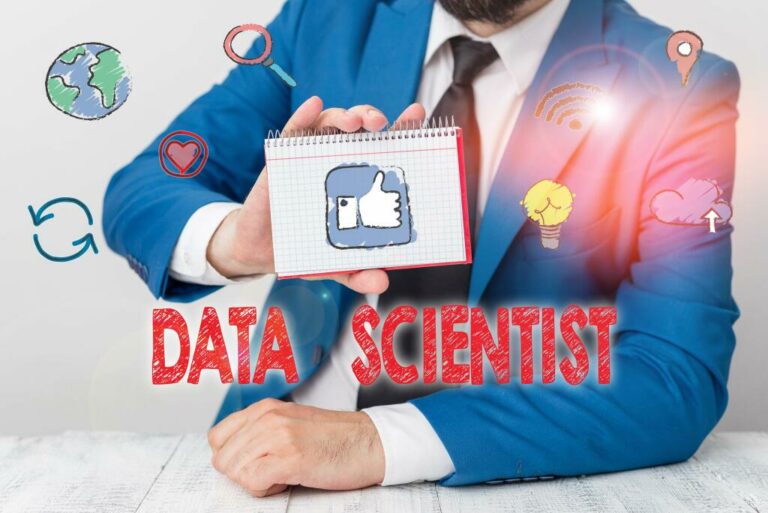There are so many options for entertainment these days, between video streaming services, music, podcasts and more. Many of these services use machine learning for a critical purpose — personalizing recommendations. YouTube, for example, states that over 500 hours of content are uploaded to the video hosting platform each minute. Using ML can help people discover the shows, music and platforms best suited to their unique preferences. For the consumer, picking up medication at the pharmacy often feels like a simple transaction, however, the situation behind the pharmacy counter is a different story. Pharmacists have to use information from doctors, patients, insurance companies and drug manufacturers in order to prescribe medication effectively.
Different layers may perform different kinds of transformations on their inputs. Signals travel from the first layer (the input layer) to the last layer (the output layer), possibly after traversing the layers machine learning and AI development services multiple times. You also need to know about the different types of machine learning — supervised, unsupervised, and reinforcement learning, and the different algorithms and techniques used for each kind.
Understanding the different types of artificial intelligence
Once the model has been trained well, it will identify that the data is an apple and give the desired response. The next section discusses the three types of and use of machine learning. Overall, traditional programming is a more fixed approach where the programmer designs the solution explicitly, while ML is a more flexible and adaptive approach where the ML model learns from data to generate a solution. For example, a computer may be given the task of identifying photos of cats and photos of trucks. For humans, this is a simple task, but if we had to make an exhaustive list of all the different characteristics of cats and trucks so that a computer could recognize them, it would be very hard. Similarly, if we had to trace all the mental steps we take to complete this task, it would also be difficult (this is an automatic process for adults, so we would likely miss some step or piece of information).

For example, computer vision algorithms can use machine learning to perform automatic quality control functions on a manufacturing line. These algorithms can improve supply chain efficiency, inventory control, loss reduction and delivery rate improvement. Unsupervised learning finds hidden patterns or intrinsic structures in data. It is used to draw inferences from datasets consisting of input data without labeled responses. Supervised learning uses classification and regression techniques to develop machine learning models. Supervised machine learning is often used to create machine learning models used for prediction and classification purposes.
Folio3 is Your Best Machine Learning Tech Partner
But algorithm selection also depends on the size and type of data you’re working with, the insights you want to get from the data, and how those insights will be used. In DeepLearning.AI and Stanford’s Machine Learning Specialization, you’ll master fundamental AI concepts and develop practical machine learning skills in the beginner-friendly, three-course program by AI visionary Andrew Ng. Read about how an AI pioneer thinks companies can use machine learning to transform. 67% of companies are using machine learning, according to a recent survey. One evening in August, he was at a party when he received an alert that a fresh segment had been released, with particularly prominent crackle.

Another option is Berkeley FinTech Boot Camp, a curriculum teaching marketable skills at the intersection of technology and finance. Topics covered include financial analysis, blockchain and cryptocurrency, programming and a strong focus on machine learning and other AI fundamentals. Supply chain management uses data-based predictions to help organizations forecast the amount of inventory to stock and where it should be along the supply chain.
Fact vs. Fiction: How Does Machine Learning Actually Work?
At the beginning of our lives, we have little understanding of the world around us, but over time we grow to learn a lot. We use our senses to take in data, and learn via a combination of interacting with the world around us, being explicitly taught certain things by others, finding patterns over time, and, of course, lots of trial-and-error. Dummies has always stood for taking on complex concepts and making them easy to understand.
Data scientists often refer to the technology used to implement machine learning as algorithms. An algorithm is a series of step-by-step operations, usually computations, that can solve a defined problem in a finite number of steps. In machine learning, the algorithms use a series of finite steps to solve the problem by learning from data. In this case, the algorithm discovers data through a process of trial and error. Favorable outputs are reinforced and non favorable outcomes are discarded.
Artificial Intelligence: Know Everything About The Future Today
A deep understanding of the data is essential because it serves as a project’s blueprint, said David Guarrera, EY-Parthenon principal in the quantitative strategies and solutions practice at EY. The performance of a new machine learning model depends on the nature of the data, the specific problem and what’s required to solve it. To give an idea of what happens in the training process, imagine a child learning to distinguish trees from objects, animals, and people.
- You’ll find it used by organizations from any industry, including at FINRA, Yelp, Zillow, DataXu, Urban Institute, and CrowdStrike.
- To respond, an on-board car-crushing machine learning- sensing system is developed to detect speed collisions.
- As more outputs made available, the algorithms will adapt and increase its performance while the capacity of the machine learning to provide adequate information increases.
- It can provide immediate access to prebuilt functions, extensive toolbox and specialized apps for you to classify, regress and cluster.
- Historically, this process involved many data silos and made it difficult for pharmacists to get a complete picture regarding patient information.
- We have expertise in Machine learning solutions, Cognitive Services, Predictive learning, CNN, HOG and NLP.
- Machine learning can recommend new content to watchers, readers or listeners based on their preferences.
Unsupervised learning finds commonalities and patterns in the input data on its own. By extension, it’s also commonly used to find outliers and anomalies in a dataset. Most unsupervised learning focuses on clustering—that is, grouping the data by some set of characteristics or features. This is the same “features” mentioned in supervised learning, although unsupervised learning doesn’t use labeled data.
Explore content
Last but not the least, we will also be looking at the best programming languages for machine learning, while finally rounding up our blog by summarizing the working of machine learning. Telecommunication companies use unsupervised machine learning as they want to optimize the locations where they are building their towers. The machine learning works by estimating the number of persons rely on their communication towers. Since all phones can only link to communicate to one tower at a time, the companies use clustering algorithms to design the appropriate location of the cell sites and optimize signal receptions. Even if you do select the right mix of data, machine learning models must frequently be retrained to maintain their level of quality.
Spark is an ideal workload in the cloud, because the cloud provides performance, scalability, reliability, availability, and massive economies of scale. ESG research found 43% of respondents considering cloud as their primary deployment for Spark. https://www.globalcloudteam.com/ Muhammad Imran is a regular content contributor at Folio3.Ai, In this growing technological era, I love to be updated as a techy person. Writing on different technologies is my passion and understanding of new things that I can grow with the world.
